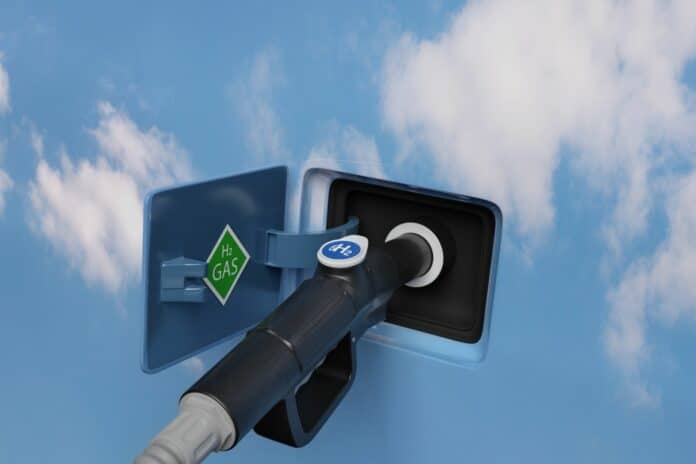As long as combustion engines rule the streets and fill the skies with smog, it’s hard to imagine a sustainable future for transportation. Hydrogen fuel cells are promising renewable alternatives with only water and a small amount of heat as byproducts.
Fuel cells have lower or zero emissions compared to combustion engines, and they can be used in a wide range of applications, providing power for vehicles, power plants, buildings, and other systems. But amongst other things, they require expensive catalysts, which speed up important fuel cell reactions. The best catalyst has been platinum-group metals, which are incredibly expensive because they are extremely rare.
In new research led by the University at Buffalo, researchers describe how iron can be combined with nitrogen and carbon to produce a new catalyst that is efficient, durable, and inexpensive – the three main objectives the U.S. Department of Energy (DOE) has identified for fuel cell research.
Iron-based catalysts are less costly alternatives because iron is abundant and inexpensive. But it does not perform as well as platinum, especially because it lacks the durability to withstand the highly corrosive and oxidative environments inside fuel cells.
To overcome this barrier, the researchers bonded four nitrogen atoms to the iron. The team then embedded the material in a few layers of graphene with accurate atomic control of local geometric and chemical structures. The resultant catalyst is believed to be the most efficient iron-based catalyst produced to date, exceeding the DOE’s 2025 target for electric current density. In tests, it achieved a durability rating that approaches platinum group catalysts.
“This has been years in the making,” says the study‘s lead author Gang Wu, Ph.D., professor of chemical and biological engineering at the UB School of Engineering and Applied Sciences. “We believe this is a significant breakthrough that will eventually help unleash the tremendous potential of hydrogen fuel cells.”
He believes that the iron-based catalyst could make hydrogen fuel cells much more affordable for commercial use. Next, the team plans to further improve the catalyst.
In addition to the University at Buffalo, the collaborative research team included members from Argonne National Laboratory; Carnegie Mellon University; Giner Inc.; Indiana University–Purdue University Indianapolis; Oak Ridge National Laboratory; Oregon State University; Purdue University; and the University of Pittsburgh.
meta: New efficient and inexpensive iron-based catalyst that can be a viable alternative to expensive platinum that has stymied commercialization of the eco-friendly fuel.
